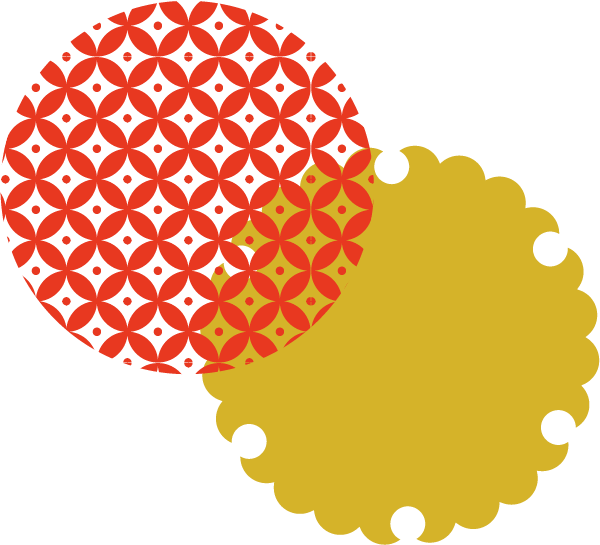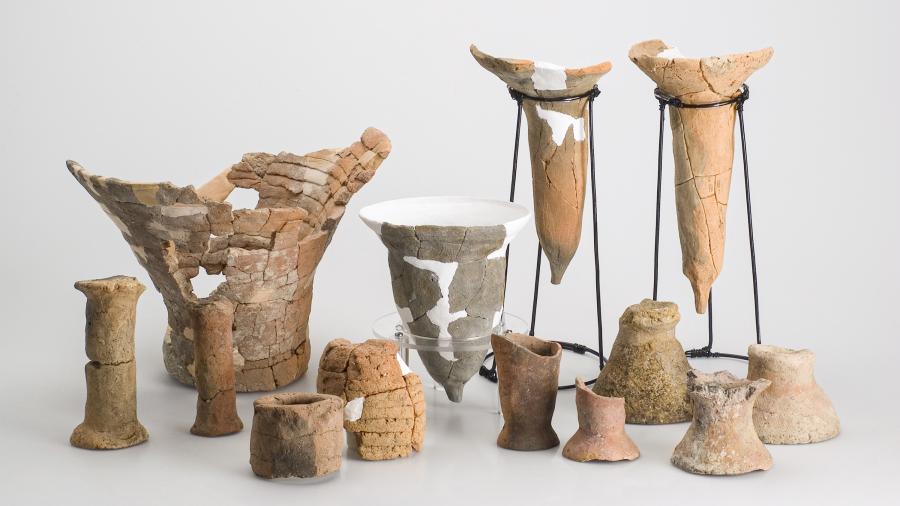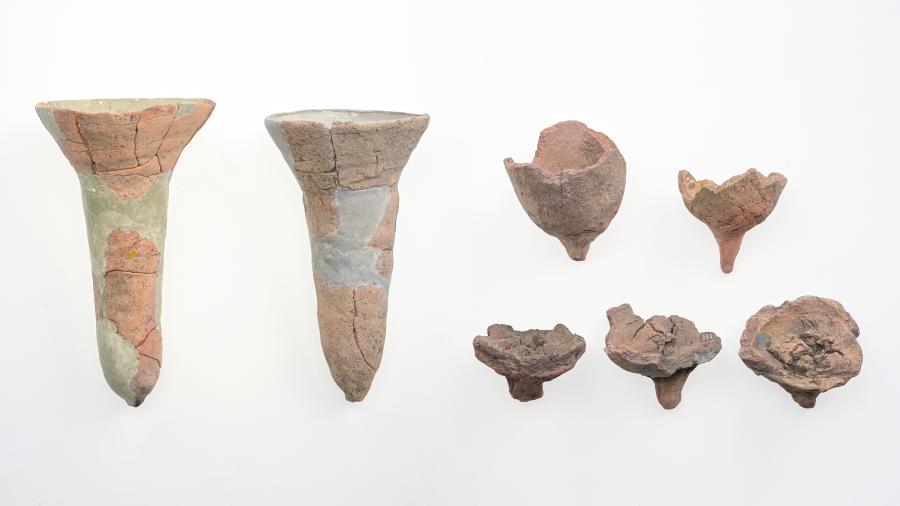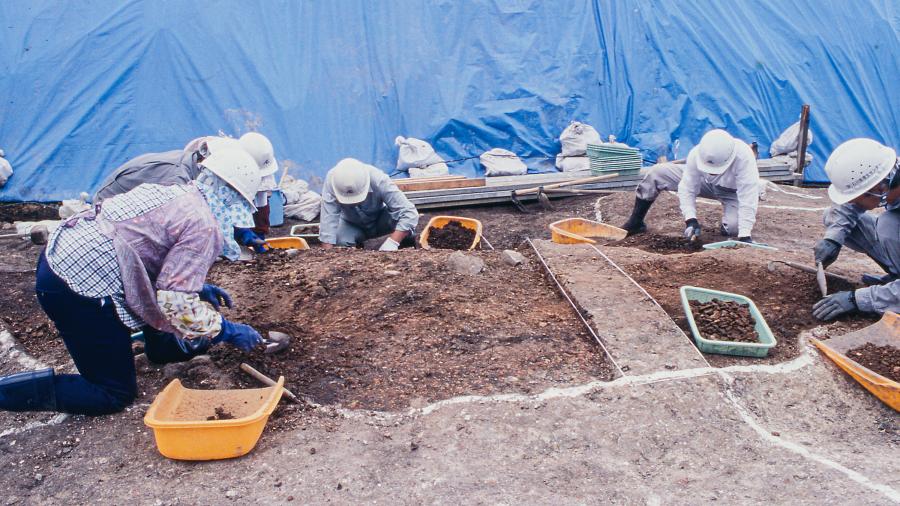Location Ishikawa Archaeological Foundation
Salt-making pottery from the Noto Peninsula
- Display status
- Partial display
- Period
- Late Yayoi Period (approx. 3rd century) to Heian Period (approx. 12th century)
- Form/Type
- Archaeological material
- Location
- Ushima, Horyu-machi (Suzu City); Uji, Misaki-machi (Suzu City); Ohtani-machi (Suzu City); Mawaki, Noto-cho (Hosu-gun), Kojima-machi (Nanao City); Notojima Enome-machi (Nanao City); Kokubu-machi (Nanao City); Yonehama, Shika-machi (Hakui-gun). All in Ishikawa Prefecture.
Approximately 300 sites of salt production using pottery have been confirmed from the Yayoi period (300 BC to 250 AD) to the Heian period (794 AD to 1185) along the coastal areas of the Noto Peninsula. This salt production was carried out by placing seawater with a high salt concentration (brine) into pottery and boiling it down. Pottery salt-making began around the end of the Yayoi period using pottery with legs (bottom right photo: Kojima Nishi Site in Nanao City) and spread throughout the entire Noto Peninsula from the late Kofun period (250 AD – 538 AD) to the Heian period. It was conducted actively using pottery with rod-shaped bottoms (top right and center photo: Ushima Site in Suzu City) as well as round-bottomed and flat-bottomed pottery with clay supports (left photo: Yonehama Site in Shika Town). Additionally, the salt-making pottery is roughly made, with visible clay joint marks. Due to the long boiling of brine, the pottery that was exposed to fire often becomes red and brittle, resulting in many fragments being found at the sites.
Downloading, taking screenshots, conversion, reprinting, etc. of the content on this website, including the text and images, without prior consent are prohibited.
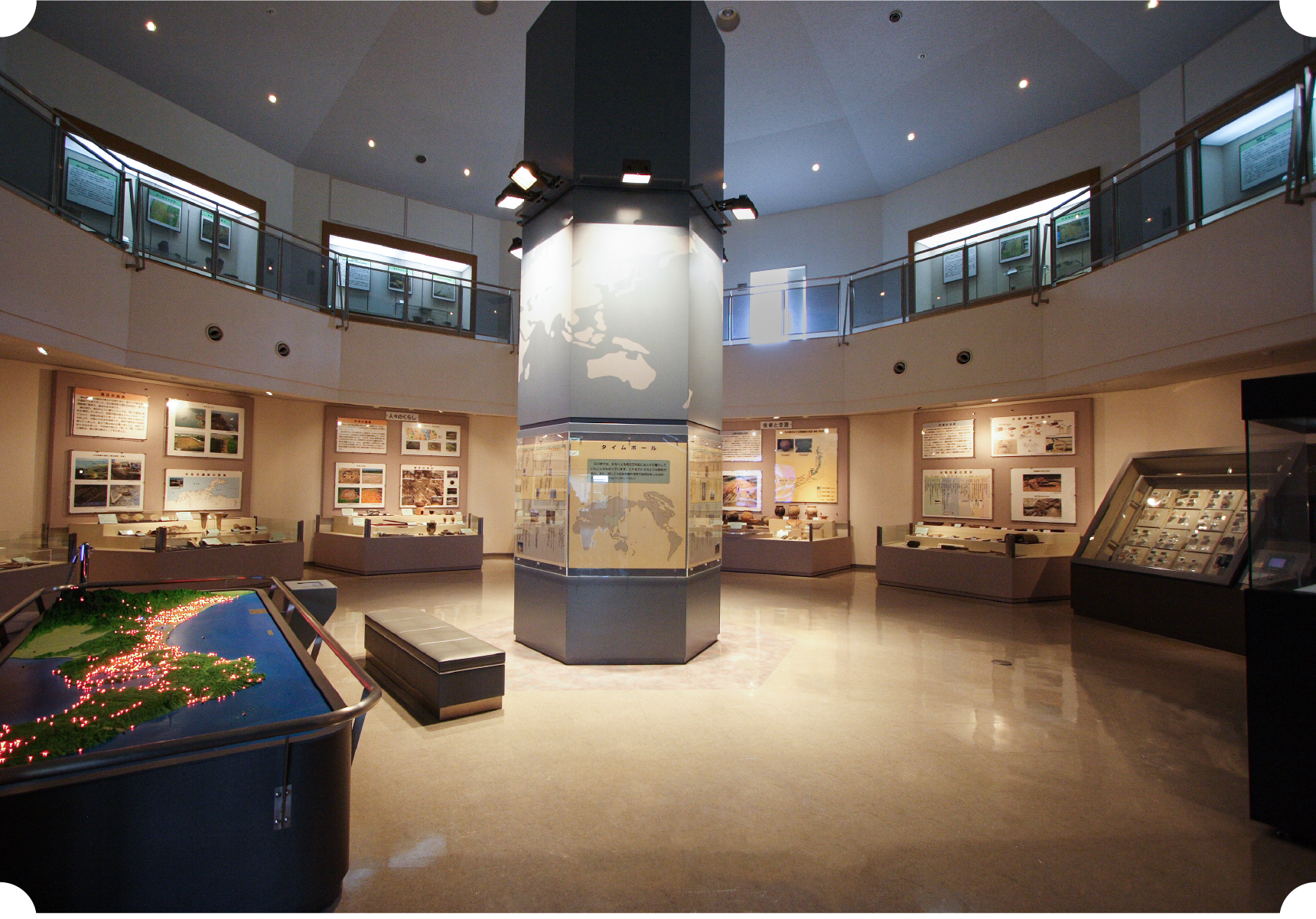
Opened in 1998 as an open facility for the excavation and organization of excavated artifacts and the publication of reports on buried cultural properties (archaeological sites) that convey the history and culture of Ishikawa prefecture, as well as to hold exhibitions and lectures that make use of the results. The exhibition rooms comprise sections organized by theme and era, where you can see and touch precious earthenware and stone tools discovered from archaeological sites throughout the prefecture. In 2001, they also opened the Ancient Experience Area, where you can enjoy learning about the lives and techniques of ancient people. Both adults and children can learn about local history in an accessible and easy manner, while deepening their interest and understanding of cultural properties.
18-1 Nakatomachi, Kanazawa, 920-1336 Google Maps
TEL 076-229-4477 E-mail daihyou@ishikawa-maibun.or.jp

